
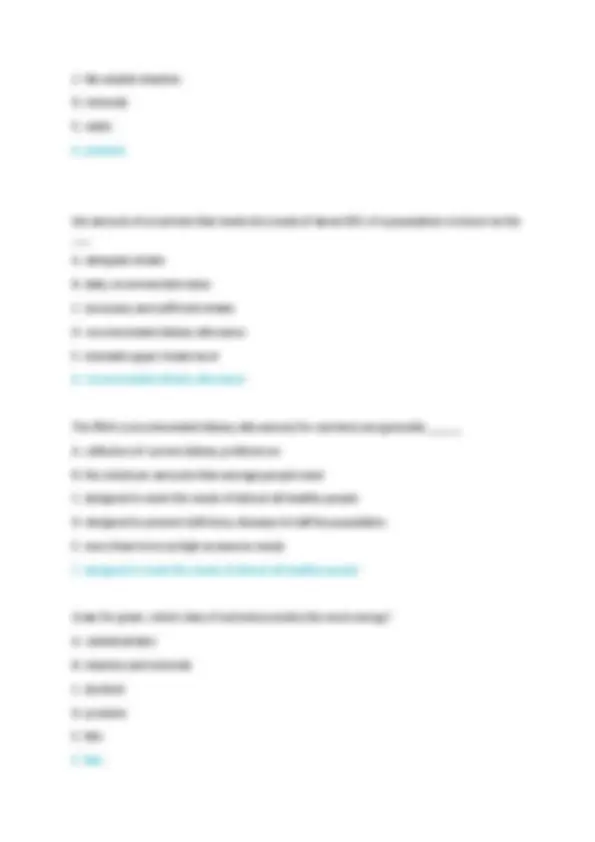
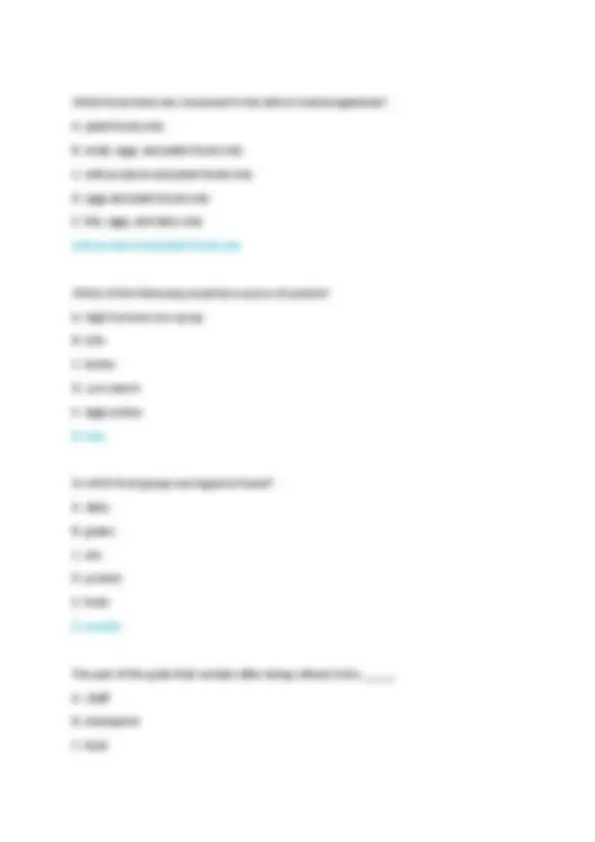
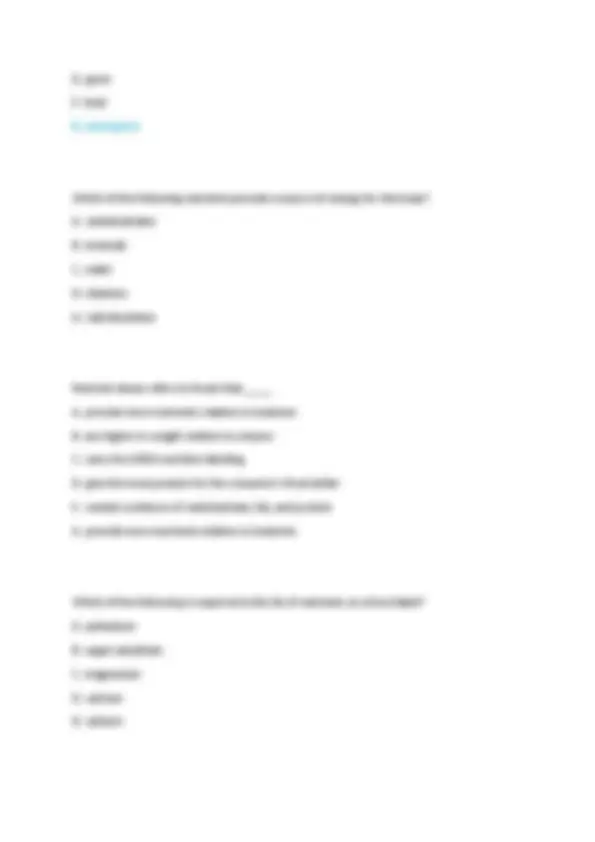
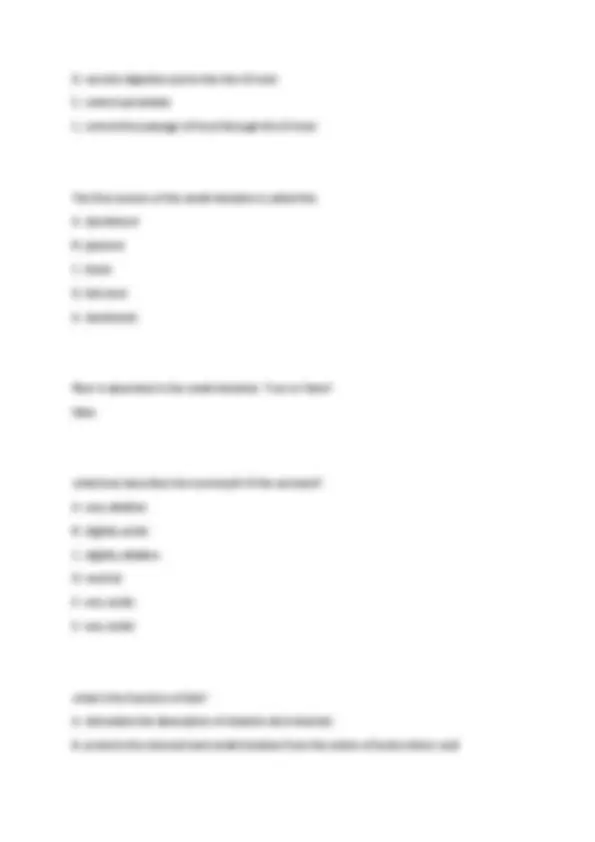
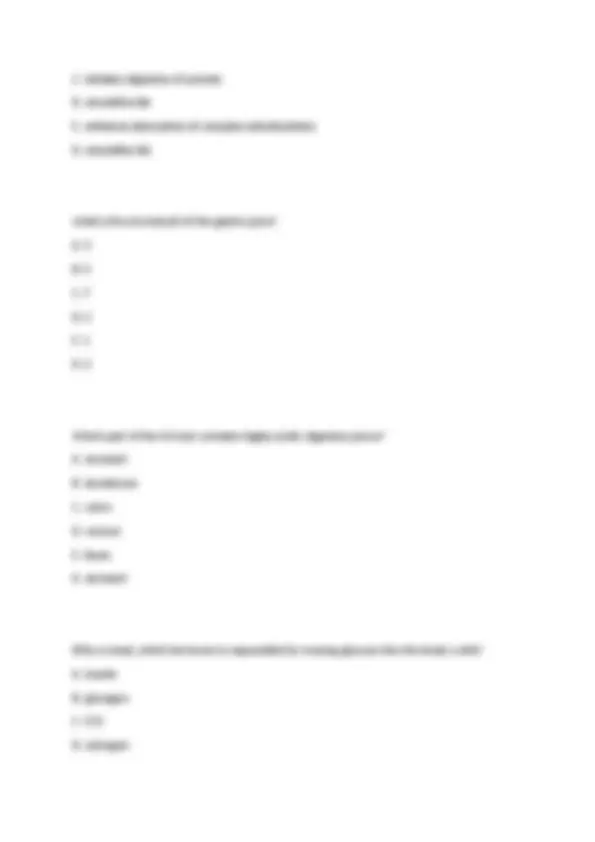


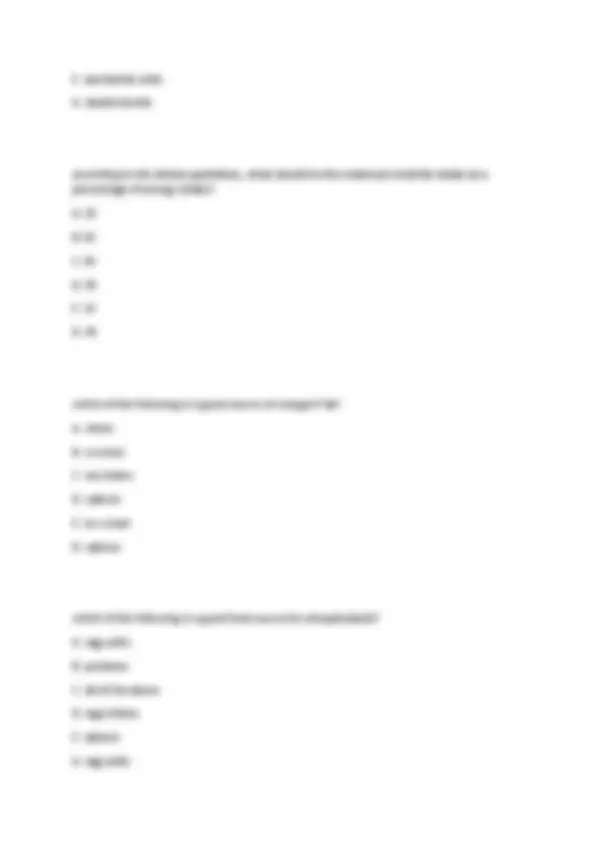
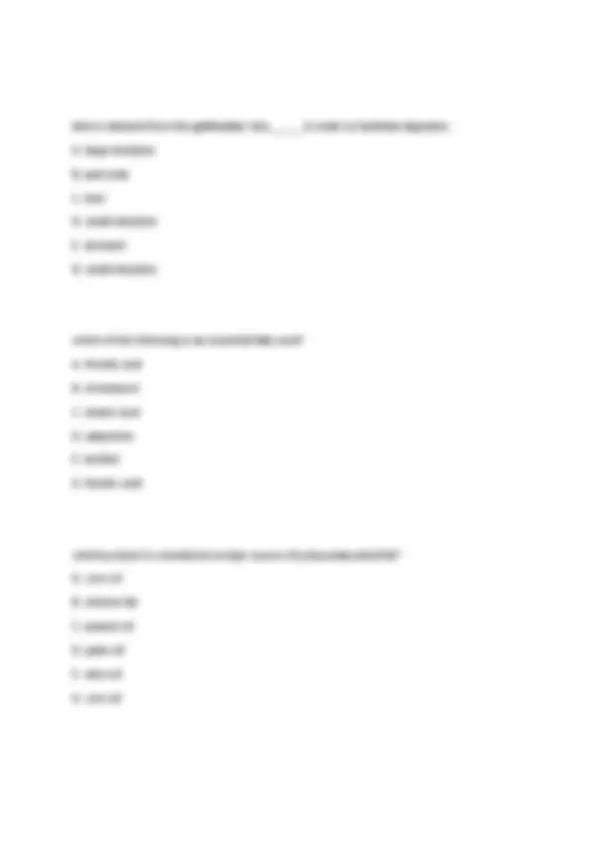
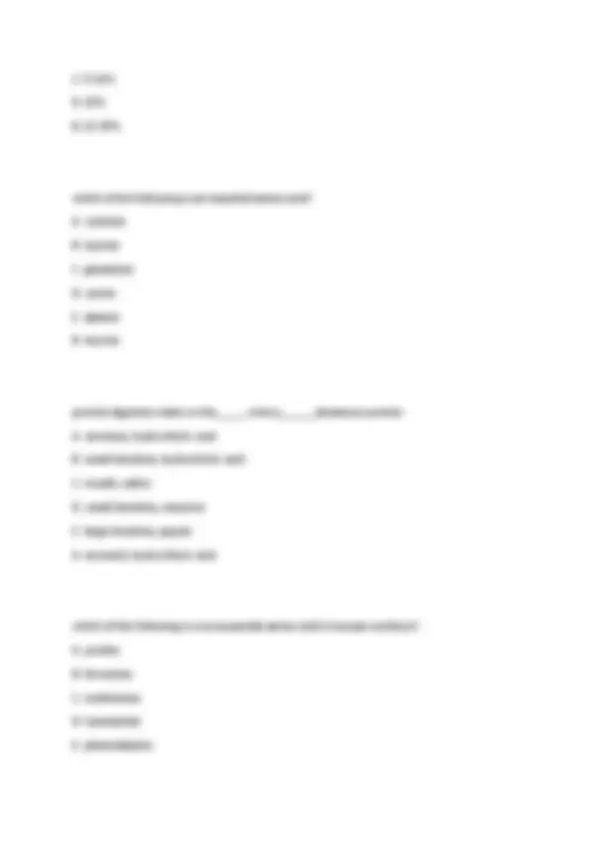
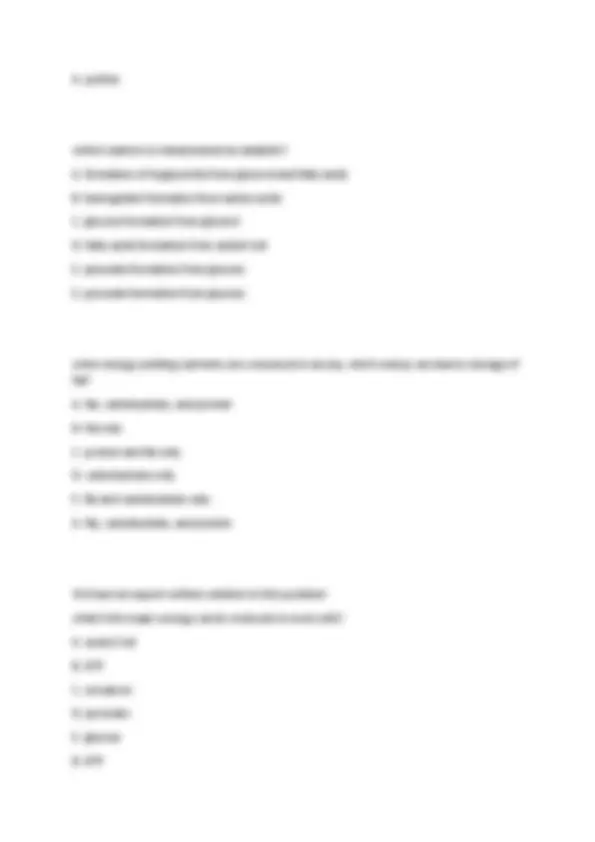
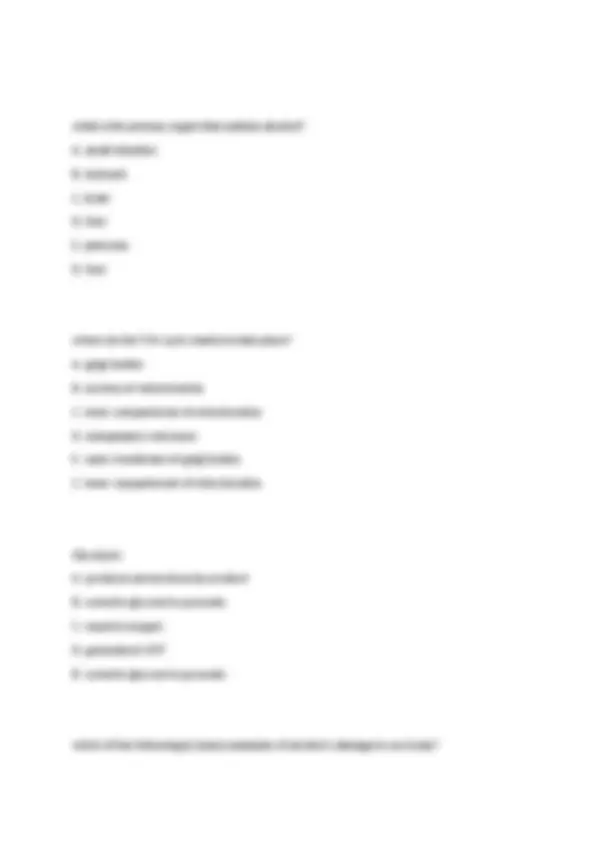
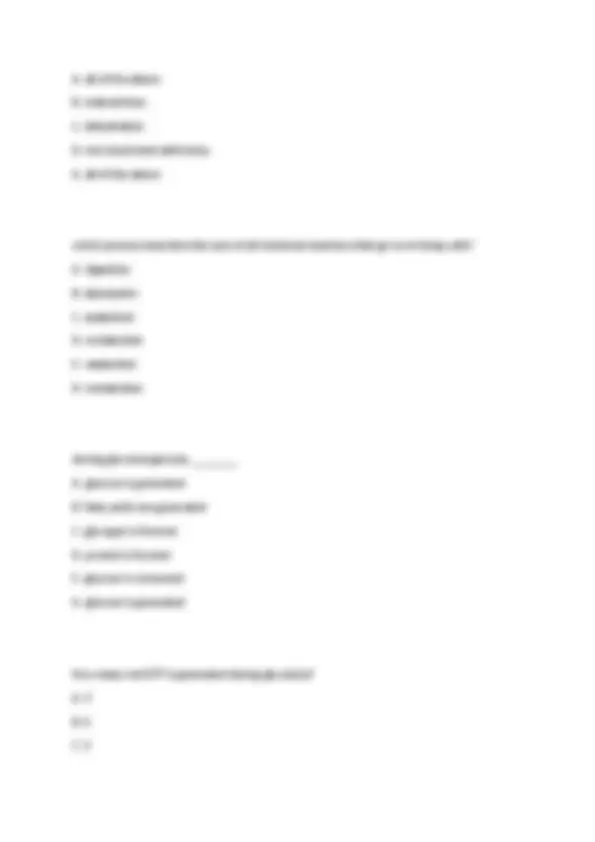



Study with the several resources on Docsity

Earn points by helping other students or get them with a premium plan


Prepare for your exams
Study with the several resources on Docsity

Earn points to download
Earn points by helping other students or get them with a premium plan
Community
Ask the community for help and clear up your study doubts
Discover the best universities in your country according to Docsity users
Free resources
Download our free guides on studying techniques, anxiety management strategies, and thesis advice from Docsity tutors
A wide range of topics related to nutrition and digestion, including the definition of organic compounds, the purpose of the dietary reference intakes, the macronutrient composition of different food groups, the functions of various digestive organs and enzymes, and the processes of carbohydrate, protein, and lipid metabolism. Detailed information on the chemical structures, sources, and roles of different nutrients, as well as the mechanisms of nutrient digestion and absorption. It also touches on topics such as complementary proteins, protein quality, and the effects of alcohol on the body. Overall, this document offers a comprehensive overview of the fundamental principles and mechanisms underlying human nutrition and digestion, making it a valuable resource for students and researchers in fields related to health, nutrition, and biology.
Typology: Exams
1 / 22

This page cannot be seen from the preview
Don't miss anything!















How does a double-blind experiment work? A. both subject know whether they are in the control or experimental group, but the researchers do not know B. neither group of subjects know whether they are in the control or experimental group, but the researchers do know C. both subjects take turns getting each treatment D. neither the subjects nor the persons having contact with the subjects know the true purpose of the experiment E. neither the subjects nor researchers know which subjects are in the control or experimental group E. Neither subjects nor researchers know which subjects are in the control or experimental group In the scientific method, a tentative solution to a problem is called a A. hypothesis B. deduction C. correlation D. prediction E. theory A. hypothesis which nutrient source will yield more than 4 kcalories per gram? A. animal proteins B. plant carbohydrates C. animal carbohydrates D. plant fats E. plant proteins
D. plant fats The term organic, as related to compounds, would be best defined as. A. substances with carbon-carbon or carbon-hydrogen bonds B. substances that contain water C. foods having superior nutrient qualities D. products sold at health food stores E. products grown without the use of pesticides A. substances with carbon-carbon or carbon-hydrogen bonds the dietary reference intakes may be used to A. diagnose diet-related disorders B. assess adequacy of all required nutrients C. treat people with diet-related disorders D. plan and evaluate diets for healthy people E. assess adequacy of only vitamins and minerals D. plan and evaluate diets for healthy people What is the AMDR for fat? A. 20 - 35% B. 10 - 30% C. 40 - 50% D. 70 - 80% E. 55 - 65% A. 20 - 35% Which nutrient is an example of a macronutrient? A. proteins B. water-soluble vitamins
Which food items are consumed in the diet of a lactovegetarian? A. plant foods only B. meat, eggs, and plant foods only C. milk products and plant foods only D. eggs and plant foods only E. fish, eggs, and dairy only milk products and plant foods only Which of the following would be a source of protein? A. high fructose corn syrup B. tofu C. butter D. corn starch E. diglycerides B. tofu In which food groups are legumes found? A. dairy B. grains C. oils D. protein E. fruits D. protein The part of the grain that remains after being refined is the A. chaff B. endosperm C. husk
D. germ E. bran B. endosperm Which of the following nutrients provide a source of energy for the body? A. carbohydrates B. minerals C. water D. vitamins A. carbohydrates Nutrient dense refers to foods that A. provide more nutrients relative to kcalories B. are higher in weight relative to volume C. carry the USDA nutrition labeling D. give the most protein for the consumer's food dollar E. contain a mixture of carbohydrate, fat, and protein A. provide more nutrients relative to kcalories Which of the following is required in the list of nutrients on a food label? A. potassium B. sugar substitute C. magnesium D. calcium D. calcium
During digestion, bicarbonate is produced by , the purpose of bicarbonate is to. A. small intestine; neutralize pH B. liver; neutralize pH C. pancreas; neutralize pH D. pancrease; decrease pH C. pancreas; neutralize pH Bile is produced by the: A. gallbladder B. liver C. stomach D. pancreas B. liver The gastrointestinal microbiome is comprised primarily of A. probiotics B. bacteria C. villi D. viruses E. mucosa B. bacteria one function of sphincter muscles is to A. trigger hormone release B. grind large food particles C. control the passage of food through the GI tract
D. secrete digestive juices into the GI tract E. control peristalsis C. control the passage of food through the GI tract The first section of the small intestine is called the: A. duodenum B. jejunum C. ileum D. bile duct A. duodenum fiber is absorbed in the small intestine. True or False? false what best describes the normal pH of the stomach? A. very alkaline B. slightly acidic C. slightly alkaline D. neutral E. very acidic E. very acidic what is the function of bile? A. stimulates the absorption of vitamins and minerals B. protects the stomach and small intestine from the action of hydrochloric acid
A. insulin is the preferred source of energy for the brain and nerve cells. A. maltose B. glucose C. lactose D. fructose B. glucose what is the primary function of insulin? A. stimulating intestinal carbohydrate absorption B. stimulating glycogen breakdown C. lowering blood glucose levels D. raising blood glucose levels E. stimulating ketoacidosis C. lowering blood glucose levels what is the principle carbohydrate of milk? A. galactose B. glycogen C. lactose D. sucrose E. maltose C. lactose
in which of the following tissues is glycogen typically stored? A. muscle and liver B. spleen and lymphatics C. stomach and intestine D. brain and red blood cells E. pancreas and kidneys A. muscle and liver what is the composition of sucrose? A. one glucose and one galactose unit B. two galactose units C. two fructose units D. one galactose and one fructose unit E. one glucose and one fructose unit E. one glucose and one fructose unit what is the primary storage form of carbohydrate in the body? A. starch B. glucose C. fiber D. glucagon E. glycogen E. glycogen what is the sweetest-tasting monosaccharides in the diet? A. lactose
C. all of the above D. olive oil E. butter E. butter in the digestion of fats, acts as an emulsifier A. cholesterol B. bile C. hormones D. enzymes E. chylomicrons B. bile which of the following foods contains cholesterol? A. coconut oil B. corn C. olives D. roasted turkey E. roasted peanuts D. roasted turkey Lipids differ in their degree of saturation or unsaturation due to their number of. A. double bonds B. peptide linkages C. oxygen atoms D. amino acids
E. saccharide units A. double bonds according to the dietary guidelines, what should be the maximum total fat intake as a percentage of energy intake? A. 20 B. 60 C. 50 D. 35 E. 10 D. 35 which of the following is a good source of omega- 3 fat? A. olives B. coconut C. soy beans D. salmon E. ice cream D. salmon which of the following is a good food source for phospholipids? A. egg yolks B. potatoes C. all of the above D. egg whites E. salmon A. egg yolks
which of the following is an example of complementary proteins? A. black beans and rice B. animal proteins C. soy proteins D. rice proteins E. almond proteins A. black beans and rice the process whereby messenger RNA is made from a DNA template is A. expression B. sequencing C. transcription D. ribosome assembly E. translation C. transcription When two amino acids are chemically joined together, the resulting structure is called a A. dipeptide B. diglyceride C. polypeptide D. disaccharide E. polysaccharide A. dipeptide which of the following food proteins has the best assortment of essential amino acids for the human body?
A. egg B. rice C. corn D. gelatin E. soy A. egg in general, the protein quality in grains would be most improved by the addition of plant protein rich in A. lysine B. tryptophan C. phenylalanine D. glutamic acid E. methionine A. lysine the application of heat or acid to a protein that causes its shape to change is known as A. stiffening B. condensation C. denaturation D. destabilization E. hydrolization C. denaturation what percentage of total calorie should be provided by protein? A. 40 - 50% B. 10 - 35%
A. proline which reaction is characterized as catabolic? A. formation of tryglyceride from glycerol and fatty acids B. hemoglobin formation from amino acids C. glucose formation from glycerol D. fatty acids formation from acetal CoA E. pyruvate formation from glucose E. pyruvate formation from glucose when energy-yielding nutrients are consumed in excess, which one(s) can lead to storage of fat? A. fat, carbohydrate, and protein B. fat only C. protein and fat only D. carbohydrate only E. fat and carbohydrate only A. fat, carbohydrate, and protein We have an expert-written solution to this problem! what is the major energy carrier molecule in most cells? A. acetyl CoA B. ATP C. a kcalorie D. pyruvate E. glucose B. ATP
what is the primary organ that oxidizes alcohol? A. small intestine B. stomach C. brain D. liver E. pancreas D. liver where do the TCA cycle reactions take place? A. golgi bodies B. nucleus of mitochondria C. inner compartment of mitochondria D. endoplasmic reticulum E. outer membrane of golgi bodies C. inner compartment of mitochondria Glycolysis: A. produces ammonia as by-product B. converts glucose to pyruvate C. requires oxygen D. generates 6 ATP B. converts glucose to pyruvate which of the following(s) is(are) examples of alcohol's damage to our body?